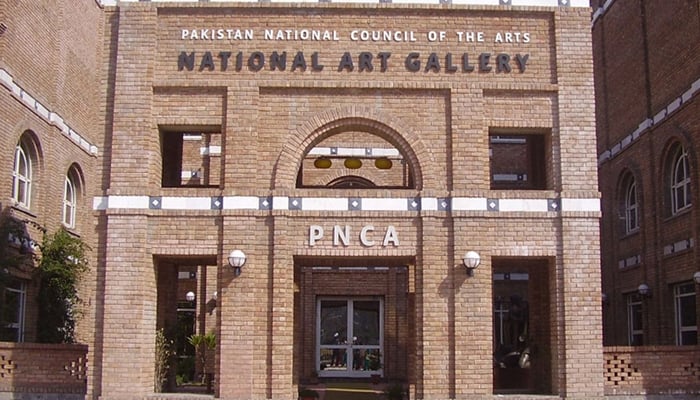
ANKARA (AA): After the completion of the restoration of its collection, the Ethnography Museum, one of the important cultural stops of the Turkish capital Ankara, has started to host visitors with unique works that were previously kept in storage but have now been curated to be displayed in accordance with their history for the first time.
Museum director Ali Haydar Atalar told Anadolu Agency (AA) that the process started with the restoration of 325 artifacts. Stating that they designed a curation and concept in the museum that will appeal to all people, Atalar said, “The museum has been brought to the forefront with the works having a more qualified, more emphatic story.”
In the museum, an artistic and digital presentation with films, photographs, animations and voiceovers in the mausoleum part, where Turkey’s founder Mustafa Kemal Atatürk’s body was kept before he was transferred to his final resting place at Anıtkabir, is presented to visitors now.

In the wooden works hall, mihrabs (prayer niche) and minbars (pulpit), which shed light on history with its 700-year past, the door wings of the Hacı Bayram Veli Mosque, Sufi Turkish poet Hacı Bayram Veli’s cardigan and some items used by mystic dervishes have been put on display.
In the middle of the hall of manuscripts and calligraphy, the letters of Surah Al-Alaq, which was the first surah revealed to the Prophet Muhammad and started with the verse “Read in the name of your Lord,” has been placed on the open pages of the Quran as if they are descending from the sky, and the calligraphy plates show the point that Islamic art had reached.
In the hall of power, the ingenuity of the Turks in using arms and war equipment in the difficult geography they lived in Central Asia is revealed through various displays. The Seljuk throne belonging to the reign of the Seljuk Turk Sultan Gıyaseddin Keyhüsrev I is also exhibited in the same hall.

In addition to tiles and porcelain from early times, including the famed products of Iznik, to the late Ottoman period, the first porcelain works from the Yıldız factory, which was established by the order of Sultan Abdülhamid II, are also displayed in the museum.
On the other wing of the museum, a concept emphasizing the history of the city and the museum is created.
In the area where the works belonging to the art of weaving are located, woven rugs made for the liberation of the Kars, Ardahan, Batum and Ardahan sanjaks (administrative divisions of the Ottoman Empire) from enemy occupation are included in the exhibition of the museum for the first time.

In the temporary exhibition hall, it is emphasized in the “Healing Bowls and Talisman Seals” exhibition that the real source of healing lies in the Quran. In the newly created “Elegance and Aesthetics” section, examples of Ottoman women’s clothing, outfits and jewelry preferences are presented.
According to Museum Director Atalar, the museum officials completed the process of identifying artifacts, positioning them and bringing their stories to the fore, within a period of approximately five months when the museum was closed for restoration, display and arrangement works.
The post Ankara Ethnography Museum invites visitors with restored collection appeared first on The Frontier Post.








